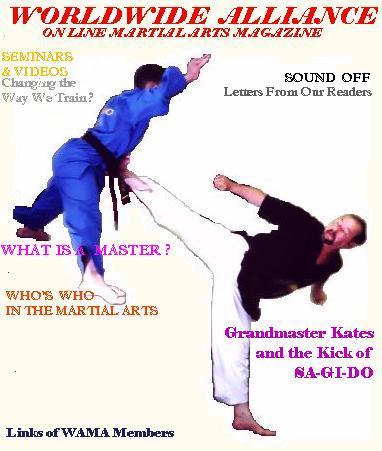Escrima
A Philipino martial art that has been developed over many decades. It utilizes the short stick as the main weapon. It has sport application as well self-defence application.
|
#History of Filipino Martial Arts The history of the Philippines stretches all the way back as far as 900 AD. Examining the history of the Philippines as a nation, it is clear that martial arts have always been an essential part of the Filipino society. Many different cultures and migrants influenced the martial arts of the Philippines, like in many other places. |
Settled in about 200 B.C by the Malays, in a first wave of migrations from the Southeast, they brought with them the weapon of the long knife. Although many weapons of different shapes and sizes were brought into the Philippines, the "Kris", a wavy bladed knife from the island of Java, was the first foreign weapon to be transplanted into the Filipino fighting arts. During the two more migrations that followed, these people were actually the ancestors of the present day Muslim-Filipinos of Mindanao and Sulu.
In 1518, Ferdinand Magellan convinced King Charles I of Spain that the Moluccas, then known as the Spice Islands, could be reached by sailing west. Magellan told the king that the Moluccas belonged to the Spanish side of the demarcation line drawn according to the Treaty of Torsedillas. The king agreed to send an expedition to the Spice Islands under the command of Ferdinand Magellan. On September 20, 1519, the expedition sailed southward across the Atlantic Ocean. Magellan reached the southernmost tip of South America, where he crossed the Pacific Ocean strait, otherwise now known as the Magellan strait. On March of 1521, he finally reached the Marianas. After resting, his men and obtaining provisions, Magellan continued his voyage and, on March 17th, 1521, sighted the mountains of Samar, marking their arrival in the Philippine Archipelago.
On April 28th, Ferdinand Magellan and his men waded ashore in knee high water to do battle with Raja LapuLapu and his men. The methodical historian at his side, Antonio Pigafetta recorded that LapuLapu's men were armed with fire-hardened sticks. In this battle, Magellan was slain by the chief Raja LapuLapu with a Kampilan by a blow to the leg and then a thrust to the neck.
In 1542 the group of islands was officially named Las Philippinas in honor of Prince Philip who later became King Philip of Spain (Philip II, 1556-1598). An explorer named Ruy Lopez de Villalobos, one of Magellan's predecessors takes credit for giving the place its name.
Spanish rule in the Philippines lasted until 1898 when Spain was defeated in the Spanish-American war. During this long period of colonization, the Spanish had some important effects on the Filipino culture. Firstly, most of the population was converted to Roman Catholicism with the exception for the Muslim Moros of the Sulu archipelago. Spanish fencing also had a direct effect on the fighting arts of the Philippines, with the introduction of the angles of attack, and the use of Espada y daga. When the Spanish imposed a ban on the practice of all native fighting arts and the carrying of bladed weapons during their occupation of the islands, the Filipinos were forced to substitute the use of the sword with that of the rattan. In the beginning, the rattan was used to deliver strikes in the same manner as the blade i.e. slashing and thrusting, and the knife or short stick was still held in reserve as a back up weapon in case the opponent closed the distance, typical of its use by the Spanish. It was hardly ever used to block or parry an oncoming strike. However, through time, the Filipinos began to realize that because the stick had different handling qualities, certain lines of attack were open to them that were not available with the sword, for example, the curved and snapping strikes. Once they began to appreciate the combat effectiveness of the stick, the use of the knife also changed and began to be used more aggressively in terms of blocking, parrying, checking, scooping, thrusting and slashing. This in turn led to the creation of "Olisi y baraw", which is the stick and dagger.

